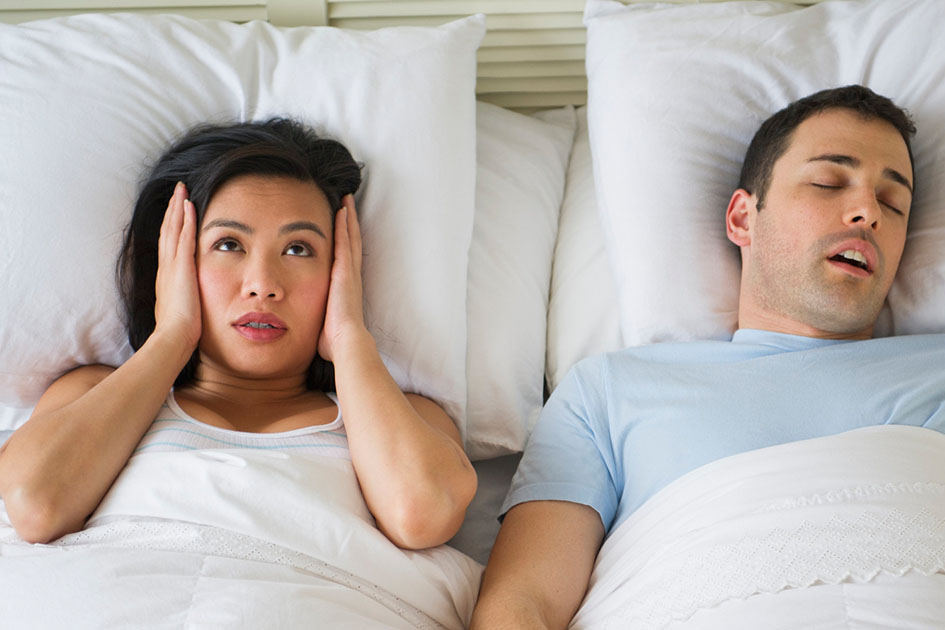
Snoring and Obstructive Sleep Apnoea
Snoring affects over 40% of the adult population, and may be an indication of obstructed breathing and should not be taken lightly. The noisy sounds of snoring occur when the flow of air through the air passages are hindered at the back of the mouth and nose. The area behind the mouth and nose are the collapsible part of the airway where the tongue and upper throat meet the soft palate. Snoring takes place when these structures strike each other, causing a vibration during breathing.
Common conditions affecting people who snore may include the following:
- · Poor muscle tone in the tongue and throat: When muscles are too relaxed, the tongue falls backwards into the airway or the throat muscles draw in from the sides into the airway.
- · Long soft palate: A long palate narrows the opening from the nose into the throat. The excessive length of the soft palate acts as a noisy flutter valve during relaxed breathing.
- · Excessive bulkiness of throat tissue: Children with large tonsils and adenoids often snore. Overweight people may have excess soft tissue in the neck that can lead to airway narrowing.
- · Obstructed nasal airways: A stuffy or blocked nose requires extra effort to pull air through it. This creates an exaggerated vacuum in the throat that pulls together the floppy tissues of the throat, and snoring results.
Snoring can make the snorer an object of ridicule and can cause the bed partner to experience sleepless nights and fatigue. It also disturbs sleeping patterns and deprives the snorer of adequate rest. It may be a sign of obstructive sleep apnoea, which can lead to serious, long-term health problems.
Obstructive sleep apnoea is characterized by multiple episodes of paused breathing for more than 10 seconds at a time, due to upper airways narrowing or collapsing. Sleep apnoea results in lower amounts of oxygen in the blood, which causes the heart to work harder. It can also disrupt your natural sleep cycle, which leads to a feeling of fatigue even after adequate time in bed.